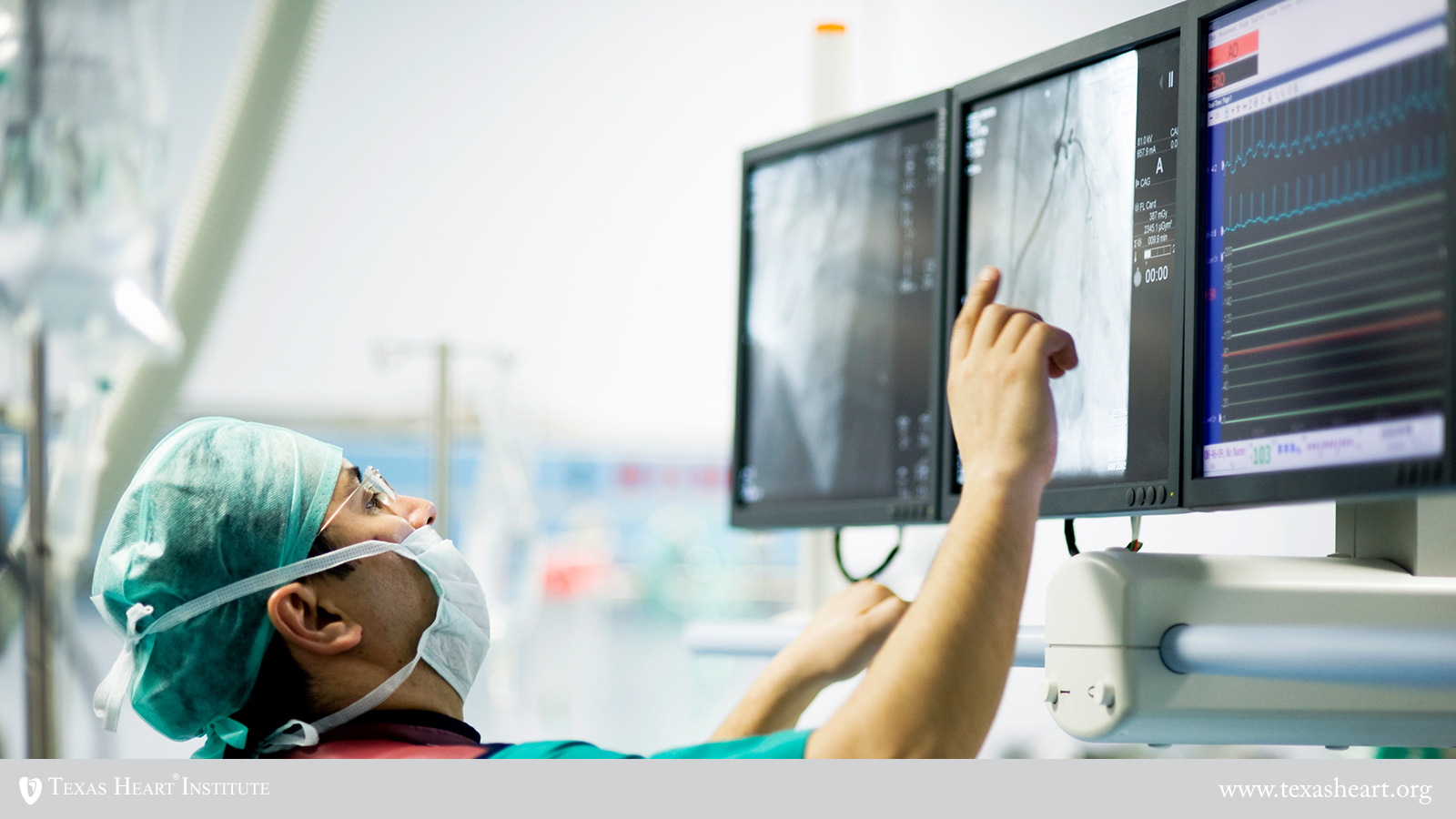EXPERT Trial Examines Radiation Exposure for Patients and Doctors During Coronary Angiography

A newly published clinical trial shows that coronary angiography by the transradial approach does not incur more radiation exposure than angiography by the transfemoral approach if it is performed by highly trained, highly experienced interventional cardiologists.
Coronary angiography is a method of producing detailed images of the heart and blood vessels to diagnose disease and guide treatment. It involves inserting a catheter via a small puncture into a patient’s artery and maneuvering the tip of the catheter into the heart or the blood vessel of interest. The catheter then releases a dye that makes the area easy to see in detail with X-rays.
For cardiologists and other healthcare workers who perform coronary angiography, the use of X-rays makes radiation exposure an occupational hazard. While they wear protective gear and take other steps to protect themselves, some exposure is unavoidable.
Traditionally, coronary angiograms are performed by the transfemoral approach: A small puncture is made in the patient’s groin and into the femoral artery so that the angiography catheter can be threaded up through the aorta and into the heart.
In recent decades, however, some cardiologists have come to prefer the transradial approach, in which the catheter is inserted via the radial artery in the arm. The transradial approach has certain advantages over the transfemoral one: The risk of bleeding and other complications at the access site is lower, and an arm puncture doesn’t cause discomfort with walking shortly after the procedure like a leg puncture does.
But the transradial approach comes with a downside: Several studies have shown that it exposes both patients and healthcare workers to more radiation than the transfemoral approach does. For healthcare professionals, even a small increase in radiation exposure could add up to a clinically significant amount over their career. However, Cristiano Cardoso, MD, PhD, MBA, of The Texas Heart Institute’s Center for Preclinical Surgical & Interventional Research, and his colleagues at the Cardiology Institute of Rio Grande do Sul, Porto Alegre, Brazil (where Dr. Cardoso completed two fellowships) weren’t certain that this difference in radiation exposure is consistent across practitioners who perform coronary angiography.
“The largest clinical trial ever performed to compare the transfemoral and transradial approaches found that the operator’s expertise and procedure volume might be especially important for the success of transradial angiograms,” says Dr. Cardoso. “So we launched our own randomized clinical trial to compare patients and clinicians’ radiation exposure between the two approaches as performed exclusively by highly trained, high-volume interventional cardiologists.
“This was called a noninferiority trial because the goal was to determine whether these experts could use the transradial approach without incurring any more radiation exposure than they would with the transfemoral approach.”
This trial, called The Transradial and Transfemoral Approach by EXPERienced Operators in Daily rouTine (EXPERT) Trial, randomly assigned 300 patients scheduled for an angiogram to undergo it by either the transfemoral or the transradial approach. The interventional cardiologists who performed the angiograms had to meet three criteria: (1) full training in both access techniques, (2) having performed at least 500 diagnostic angiograms in the previous 2 years, and (3) having level III competency per Society for Cardiovascular Angiography & Interventions (SCAI) guidelines, indicating that the cardiologist is capable of performing complex interventional procedures even in patients with acute myocardial infarction or limb anatomy that makes such procedures challenging (such as vessel blockage).
The EXPERT Trial showed that patients’ radiation exposure was similar between the two approaches: 617 milligray for transradial versus 586 milligray for transfemoral. Clinicians’ exposure was also similar: 0.49 versus 0.46 millisievert. These results were recently published in The Texas Heart Institute Journal.
“What we take away from this,” says Dr. Cardoso, “is that if the angiogram is performed by an expert, the lower risk of complications associated with transradial access does not have to come at the cost of greater radiation exposure. This will surely benefit patients treated at tertiary care centers like The Texas Heart Institute.”
Read Report
de Oliveira Cardoso C, de Moraes CV, Teixeira JV, Cardoso CR, Baldissera F, de Mattos EI, Siqueira MJ, Fischer L, Sebben JC, Santos Silva B, Broetto G, Antônio Mascia Gottschall C, Sarmento-Leite R. Randomized noninferiority trial of radiation exposure during coronary angiography: the Transradial and Transfemoral Approach by EXPERienced Operators in Daily rouTine (EXPERT) Trial. Tex Heart Inst J. 2023;50(2). doi: 10.14503/THIJ-22-7930
News Story By Stephen N. Palmer, PhD, ELS




